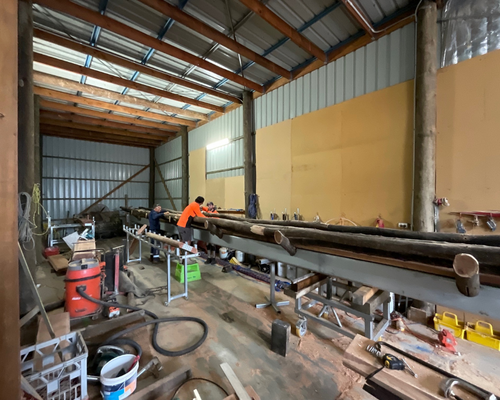Koala Crossing

FACT
In February 2022, the Koala was listed as 'ENDANGERED' in QLD, NSW and ACT under the EPBC Act. Research conducted by the Australian Koala Foundation strongly suggests the Koala's conservation status should be upgraded to "CRITICALLY ENDANGERED" in the South East Queensland Bioregion as the Queensland Minister for the Environment has declared them to be "functionally extinct." That makes providing safe way to cross busy roads an imperative.

Worlds' First "KOALA CROSSING BRIDGE"
We had the pleasure of recently working with a Local Civil Contractor to manufacture and install the World First "Koala Crossing Log Bridge" for the Brisbane City Council. This specific bridge design includes an overhead log bridge and fauna fencing allowing koalas to safely cross between habitat areas. However, we believe possums & gliders will also benefit from the new design. Previously there was no safe way for koalas to cross roads.

Custom Manufacturing and Installing
Manufacturing and Installing this world first Koala Crossing bridge was done Netting.com.au and Fauna Crossings Australia. This unique first of a kind koala bridge spans over 27 metres in length and was built right here on the Gold Coast. We used locally sourced materials such as ironbark short leaf to create a crossing that replicated a koalas natural habitat. With help of 5 employees, the "Koala Log Bridge" took just over a month to manufacture and is truly a world first. And we know that the intended users love it.
At Fauna Crossings, we are committed to ensuring ‘best practice’ in researching and testing different solutions to wildlife crossing infrastructure. Our goal is to tailor each type of crossing to the specific species in various landscape contexts.We also take into consideration, new solutions to the construction and material of these structures, based on changing wildlife movement patterns due to changes in habitats, climate or other factors.
Welcome to Netting.com.au. With over 22 years of invaluable experience working in the netting industry, we have enabled our professional team to provide netting solutions to companies and individuals around the World.

















